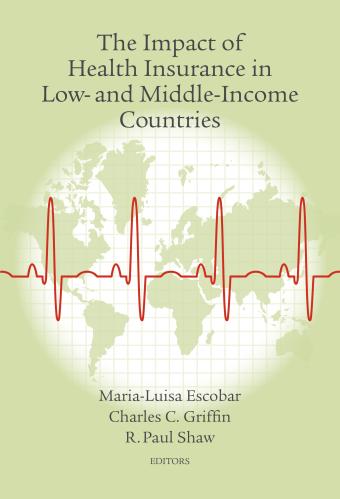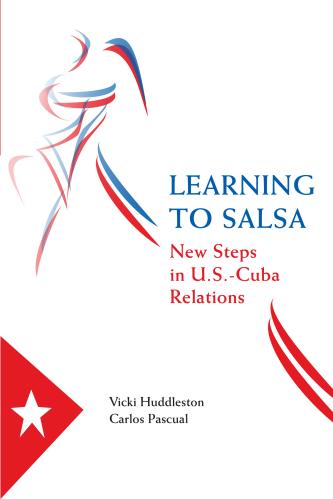2016 was a year dominated by the U.S. presidential primaries and the election in November. Brookings experts contributed their insight and expertise to helping us understand the election, but also a vast range of other public policy issues as well. Here is a small sample of the best content culled from the thousands of content items on hundreds of topics that Brookings experts produced this year.
1. We finally learned what the Constitution’s “Emoluments Clause” is about!
 Article I, Section 9 of the U.S. Constitution states that “no Person holding any Office of Profit of Trust under them, shall, without the Consent of the Congress, accept any pre-sent, Emolument, Office, or Title, of any kind whatever, from any King, Prince, or foreign State.” As Donald Trump continues his transition to the Oval Office, former White House ethics lawyers Norm Eisen—who has argued that Trump will be in violation of the Constitution on the day of his inauguration if he does not set up a true blind trust for his business holdings and assets—and Richard Painter, along with Constitutional law professor Laurence Tribe, explain the text and intent of this once-obscure clause, how it applies to Mr. Trump, and argue that “it is no relic of a bygone era, but rather an expression of insight into the nature of the human condition and preconditions of self-governance.”
Article I, Section 9 of the U.S. Constitution states that “no Person holding any Office of Profit of Trust under them, shall, without the Consent of the Congress, accept any pre-sent, Emolument, Office, or Title, of any kind whatever, from any King, Prince, or foreign State.” As Donald Trump continues his transition to the Oval Office, former White House ethics lawyers Norm Eisen—who has argued that Trump will be in violation of the Constitution on the day of his inauguration if he does not set up a true blind trust for his business holdings and assets—and Richard Painter, along with Constitutional law professor Laurence Tribe, explain the text and intent of this once-obscure clause, how it applies to Mr. Trump, and argue that “it is no relic of a bygone era, but rather an expression of insight into the nature of the human condition and preconditions of self-governance.”
2. A growing life expectancy gap between rich and poor is leading to a Social Security income gap between poor/less educated workers and others

Barry Bosworth, Gary Burtless, and Kan Zhang find that Americans who earn lower wages also retire earlier than those who earn higher wages. The longer a person works and delays retirement, the more income he/she will get from Social Security each month. But 56 percent of workers in the bottom third of the earnings distribution retire at or before age 62, while about 42 percent of those in the top third do. At the same time, workers in the higher end of the distribution live longer than the poorest do. These factors combine to exacerbate a growing income inequality among America’s older population. “These trends deserve scrutiny,” the authors write, “as policymakers consider how to reform Social Security in order to keep it adequate for retirees and sustainable for future generations.”
3. Tourism is booming in Cuba, and is poised to explode

Two full years into the rapprochement between the United States and Cuba, and following the death of Fidel Castro and the expected coming end of the Castro era on the island, business opportunities are expanding in Cuba. In their new report, Richard Feinberg—author of the recent book “Open for Business: The New Cuban Economy”—and Richard Newfarmer examine the booming Cuban tourism industry. They find, for example, that tourist arrivals jumped by over 16 percent in 2015 to 3.5 million, and the number of foreign visitors could rise to over 10 million in 2030—not including an additional 5 million in cruise passengers.
4. Quality education is scaling up around the world, leading to millions learning

For the past few decades, there has been tremendous progress getting more children into school around the world. However, too often students are still not mastering core academic content and higher-order thinking skills. In other words, this rapid scaling of schooling over the past 150 years has not translated into the scaling of learning. Eileen McGivney, Jenny Perlman Robinson, and Rebecca Winthrop present 14 in-depth case studies from low- and middle-income countries around the world where this scaling is working. Their research shows that “from the slums of New Delhi to the rainforest in Brazil, transformational change in children’s learning is happening at large scale in many places around the world.”
5. The number of jobs required to generate $1 million in manufacturing output has steadily declined in the U.S.
 Mark Muro and Sifan Liu present data that show that in 1980 it took 25 jobs to generate $1 million in manufacturing output in the U.S., whereas today it takes 6.5 jobs to generate that amount. Because of increased productivity, they note, manufacturing output has risen while jobs have declined, which fact will be a challenge for President-elect Trump’s plans to bring back manufacturing jobs.
Mark Muro and Sifan Liu present data that show that in 1980 it took 25 jobs to generate $1 million in manufacturing output in the U.S., whereas today it takes 6.5 jobs to generate that amount. Because of increased productivity, they note, manufacturing output has risen while jobs have declined, which fact will be a challenge for President-elect Trump’s plans to bring back manufacturing jobs.
6. The number of sextortion victims ranges FROM 3,000 TO 6,500

In groundbreaking research, Ben Wittes and his team explore sextortion—an uncodified and understudied crime that lies at the intersection of cybersecurity and sexual coercion. Calling it “brutal,” the researchers analyze the scope of this crime and propose a new federal statute that “would guarantee that sextortionists nationwide are subject to at least one single criminal statute, that weak state laws are backstopped by something stronger, and that the targeting of adult women victims is not systemically undervalued in sentencing in federal court relative to similar conduct against minors.”
7. Planned pregnancies lead to better life chances

Isabel Sawhill and Eleanor Krause observe that nearly half of pregnancies (about 3 million) in the U.S. are unplanned, and about half of those are the result of failure to use any kind of birth control. Reviewing the reasons why many women fail to use birth control properly or at all, the authors note that IUDs and the implant can overcome these problems and that “Making these highly effective contraceptives available leads to sharp declines in unintended and teen pregnancies.” And by doing so, they say, “Planned, timely childbearing can improve the educational and labor market outcomes for women, particularly low-income women, as well as the life chances of their children.”
8. International trade has a positive impact on U.S. job growth

Mireya Solís explains that international trade has had a positive impact on overall U.S. job growth, and that the Trans-Pacific Partnership could continue that trend. The TPP specifically, Solís notes, is estimated to result in a net positive (albeit small) effect on job creation and wages: 128,000 jobs, and increases in real wages (0.19 percent) by 2032. Unfortunately, TPP appears to be on the incoming Trump administration’s chopping block.
9. The U.S. has a pivotal role to play in reaching global climate goals

Nathan Hultman argues that “U.S. action on climate over the next four years is critical.” The United States is the world’s second largest emitter of greenhouse gases (GHGs), behind China, which emits nearly twice the amount of million net tonnes of CO2 equivalent. The U.S. emits about 13 percent of global GHGs, so it cannot solve the problem alone. Hultman writes that other nations “will be reluctant to address climate without full engagement by the U.S.” because we “are the top developed-country emitter and are looked to for leadership in both policy and the new clean energy technologies.”
10. America’s top 100 metropolitan areas contain two-thirds of the population and generate three-quarters of the GDP

Bruce Katz argues that when metro areas succeed, so too does the country. He notes how a “New American Localism” has emerged, and how in the coming era of politics, cities and metro areas are even more critical for competitiveness, social mobility, tackling climate change, and integrating immigrants.
The Brookings Institution is committed to quality, independence, and impact.
We are supported by a diverse array of funders. In line with our values and policies, each Brookings publication represents the sole views of its author(s).





Commentary
10 things we learned at Brookings in 2016
December 22, 2016